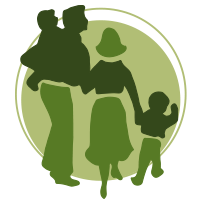For many years fats in the diet were considered unhealthy but we now know that sugars are culprit when it comes to increasing rates of diabetes, obesity and other metabolic health conditions. So, have you ever wondered how long it would take to alter your desire for sugary or sweet foods?
Well, according to research carried out by Carole Bartolotto, Senior Consultant for Regional Health in California, it’s about 2 weeks!
In 2013 Americans consumed on average 22.3 teaspoons of added sweeteners a day primarily from processed foods and beverages significantly more than is recommended by health experts.
Artificial sweeteners range from about 180 times sweeter to as much as 13,000 times sweeter than sugar but are considered ‘healthier’ than sucrose because they contain low or zero calories. However, consumption of both sugar and artificial sweeteners may be changing our palates or taste preferences over time, increasing our desire for sweet foods which is contributing to the obesity and diabetes crisis we now face.
Where do you find added sugars?
Cane sugar, high-fructose corn syrup, agave, honey, evaporated cane juice, and other forms of sugar are added to products such as carbonated drinks, cakes, cookies, and sweets. They are also added to many processed foods such as breakfast cereals, pasta sauce, yogurt, soymilk, bottled sauces, and other bottled drinks.
In fact, using their new online database, the Environmental Working Group, an American non-profit environmental group has found that almost 60% of the 80,000 products evaluated contained added sugar.
In the study 20 participants cut out all added sugars and artificial sweeteners in their diets for 2 weeks to see if their taste preferences had changed.
What happened?
After the 2-week challenge the participants completed a survey and this is what they said:
- 95% of participants found that sweet foods and drinks tasted sweeter or too sweet.
- 75% found that other foods tasted sweeter.
- 95% said moving forward they would use less or even no sugar.
- Additionally, nearly 90% of participants stopped craving sugar after 6 days.
Although this was a small survey, the results suggest that using a 2-week sugar challenge can help to reset taste preferences and make consuming less or no sugar easier.
After the challenge Ms Bartolotto said that “physicians should consider recommending a sugar and artificial sweetener challenge to all their patients, especially those with obesity, diabetes, or cardiovascular disease”.
How do you carry out your own sugar challenge?
Click on the link below to read the full article but here is a brief explanation of what you need to do:
- Do not add any form of sugar (see list below) or any alternative sweeteners to foods or drinks! Avoid artificial and alternative sweeteners including Sweet ‘N Low, Equal, Splenda, stevia, and xylitol, etc. No added sweeteners!
- Avoid all sweetened sodas, bottled teas, sports drinks, energy drinks, fruit drinks and juice (even 100% juice), specialty coffee drinks, and any other liquid with added sweeteners.
- Cut out any foods that have a lot of added sugar or any artificial sweeteners such as cookies, cake, sweets, fruit yogurt, soy or almond milk, breakfast cereals, energy bars, or other foods. Read labels! Aim for food with 5 g or less of added sugar.
- Look at the ingredient lists of foods you eat for other names for sugar such as the following:
| Sucrose | High-fructose corn syrup |
| Honey | Corn syrup |
| Maple syrup | Molasses |
| Agave | Evaporated cane juice |
| Barley malt | Dextrose |
| Coconut palm sugar | Cane sugar |
| Grape sugar | Raw sugar |
| Brown sugar | Brown rice syrup |
| Date sugar |
Note: Plain unsweetened milk and plain full fat yogurt contain natural sugars, rather than those that are added.
Limit fruits to 2 servings per day and choose lower sugar ones such as berries, apples, pears and plums.



